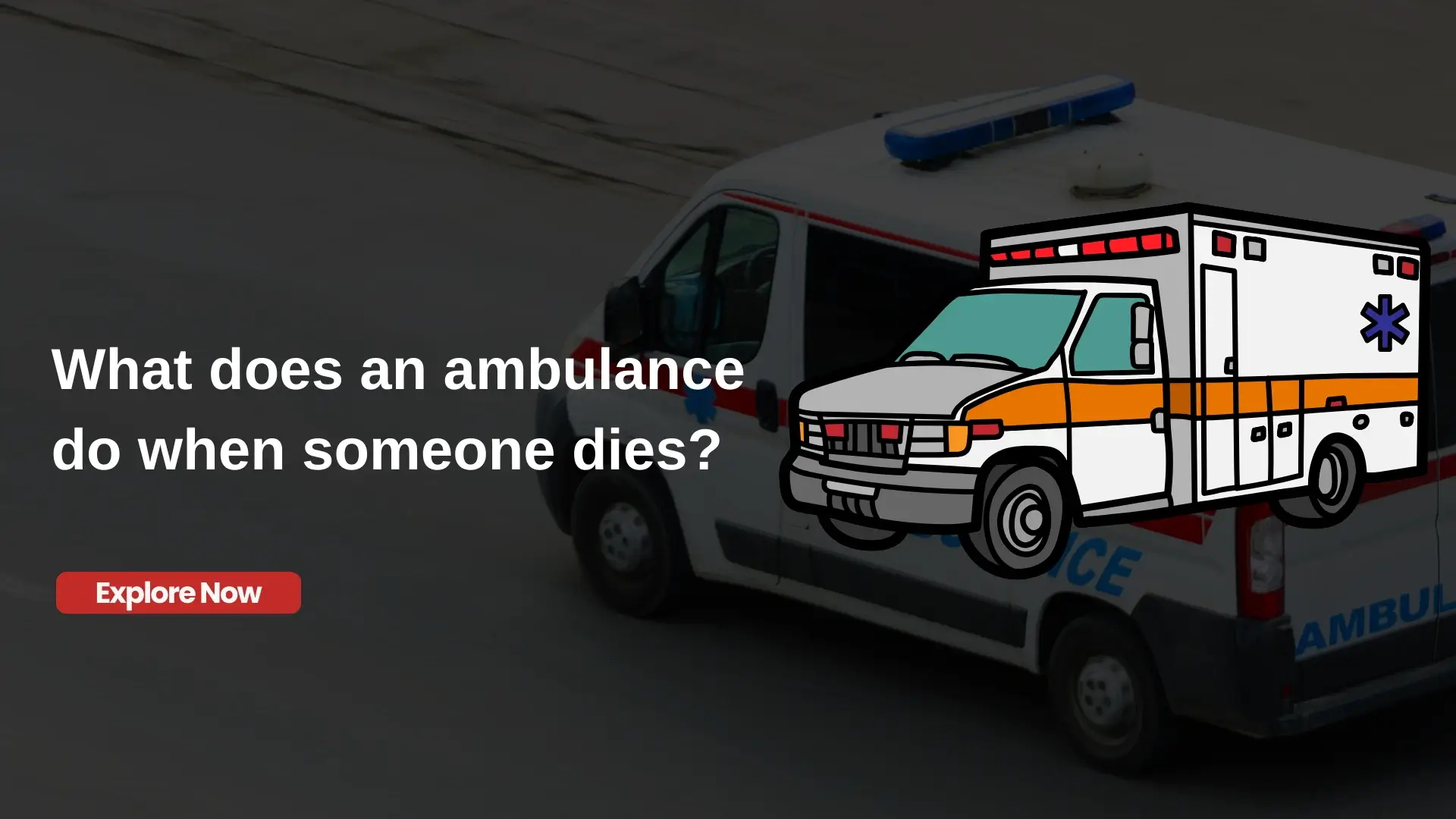
Death is most unfortunate thing that anybody can ever have. Seeing loved ones dying is a curse. But, in that situation, when you have a normal ambulance with you, the first question you may ever ask is ‘What does an ambulance do when someone dies?’ However, this is not a bad question in that horrible situation.
Many things can be expected from an ambulance when someone dies. In this blog, we have added those things that you can expect to an ambulance when somebody dies. If you are also here to know this same thing, then this blog is going to be very useful to you.
So, let’s start-
What to Expect from an Ambulance?
There are many things that you can expect from any ambulance service. However, we have added around 10 points that you can consider to expect from any ambulance service-
-
Timely Response
Explanation: From an ambulance service, we can expect that response times to emergency calls will be swift, prioritizing immediate assistance at the scene of an incident. This ensures timely access to crucial medical care, significantly impacting patient outcomes during emergencies.
-
Professionalism
Explanation: From any ambulance service, we can expect professionalism as trained paramedics and medical professionals deliver expert care. Their competence and proficiency instill confidence, ensuring the best possible treatment and support for individuals in distress.
-
Emergency Medical Care
Explanation: From an ambulance service, we can expect immediate on-the-spot medical care. Paramedics are trained to administer critical interventions, stabilizing patients before transportation to medical facilities, thereby increasing the chances of survival.
-
Life-Saving Equipment
Explanation: From any ambulance service, we can expect access to life-saving equipment. Equipped with tools like defibrillators and oxygen, ambulances enable crucial interventions, improving the patient’s condition during transit to a healthcare facility.
-
Patient Assessment
Explanation: From an ambulance service, we can expect a thorough patient assessment. Paramedics systematically evaluate the patient’s condition, allowing for tailored and appropriate medical interventions based on the individual’s specific needs.
-
Communication with Hospitals
Explanation: From any ambulance service, we can expect effective communication with hospitals. Ambulances serve as a crucial link, transmitting vital information to medical facilities, ensuring seamless coordination and preparation for the patient’s arrival.
-
Compassionate Treatment
Explanation: From an ambulance service, we can expect compassionate treatment. Paramedics approach situations with empathy, providing comfort and reassurance to both the patient and their loved ones, fostering a supportive environment during challenging moments.
-
Dignified Transportation
Explanation: From any ambulance service, we can expect dignified transportation in cases where a patient does not survive. The service ensures respectful handling and conveyance of the deceased, acknowledging the sensitivity and gravity of the situation.
-
Family Considerations
Explanation: From an ambulance service, we can expect consideration for the family. In challenging situations, paramedics may provide support and information to grieving families, offering guidance and understanding during emotionally difficult moments.
-
Continuity of Care
Explanation: From any ambulance service, we can expect continuity of care. In the unfortunate event of a fatality, ambulances contribute to a seamless transition by ensuring the smooth transfer of the deceased to mortuary or funeral services, maintaining a respectful and dignified process.
What does an ambulance do when someone dies?
When someone dies, an ambulance plays a crucial role in handling the aftermath with sensitivity and professionalism. Initially, the ambulance crew, often accompanied by law enforcement or other emergency personnel, arrives at the scene to confirm the death.
Following this, they focus on providing support to grieving family members, offering compassion and guidance during a highly emotional time. In the event of a confirmed death, the ambulance serves as a vehicle for the dignified transportation of the deceased.
Specialized mortuary vans or ambulances designed for this purpose ensure the respectful conveyance of the body. Paramedics and emergency medical technicians handle the deceased with utmost care, preserving the dignity of the individual.
Ambulance services extend their role beyond transportation by liaising with authorities and relevant institutions. They may assist in the completion of necessary paperwork and documentation required for legal and administrative processes.
Furthermore, ambulances contribute to the continuity of care by ensuring a seamless transition for the deceased and facilitating the transfer to mortuary or funeral services. In essence, when someone dies, an ambulance becomes a symbol of compassion, professionalism, and support.
Beyond its primary function in emergency response, it adapts to provide solace to grieving families and ensures that the transition from the scene of death to subsequent arrangements is handled with the utmost respect and consideration.
Conclusion
In conclusion, when someone passes away, an ambulance transforms from an emergency responder to a vehicle of compassionate care. Beyond confirming and addressing the loss, it becomes a symbol of dignity in the transportation of the deceased.
Ambulance crews, with their professionalism and empathy, offer crucial support to grieving families during emotionally charged moments. As they navigate legal processes and paperwork, ambulances ensure a seamless transition for the departed, facilitating a dignified handover to mortuary or funeral services.
In these instances, ambulances stand as a comforting presence, embodying respect and understanding during one of life’s most challenging experiences.
